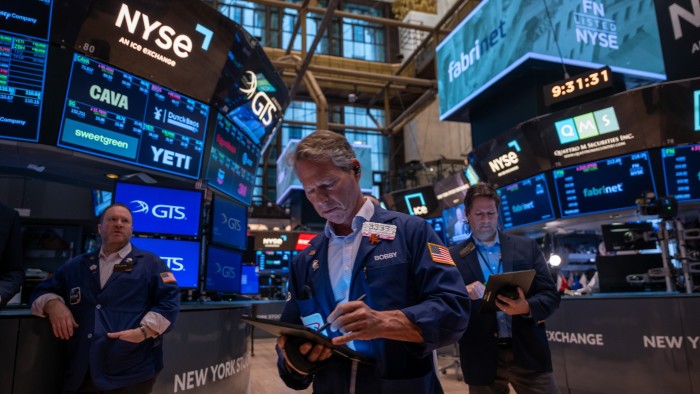Unlock the Editor’s Digest for free
Roula Khalaf, Editor of the FT, selects her favourite stories in this weekly newsletter.
US stocks wiped out their losses so far this year on Tuesday, as lower than expected inflation figures added fuel to a rally sparked by Donald Trump’s deal with China to cut tariffs.
The S&P 500 was up 0.8 per cent in morning trade in New York after data showed US inflation unexpectedly fell to 2.3 per cent in April. The move extended a strong rebound this month and left the Wall Street benchmark 0.1 per cent higher in 2025.
Rising trade tensions had already hurt US stocks before Trump’s sweeping “liberation day” tariff announcements on April 2 sent the S&P tumbling — with the index down as much as 15 per cent in 2025 — as investors dumped US assets and slashed their forecasts for economic growth.
But traders piled back into stocks on April 9, when the S&P jumped 9.5 per cent after Trump paused his “reciprocal” tariffs on most countries for 90 days, and they have continued to snap up US equities ever since.
Stocks rose 3.3 per cent on Monday after the US and China said they would both cut tariffs for at least the next 90 days following talks in Switzerland over the weekend.
“There’s been an instant reversal in the prevailing trends of the last several months,” said Shep Perkins, an equity fund manager at Putnam Investments. The agreement had been a “big positive surprise and came in the face of quite bearish sentiment for US equity markets”, he added.
Investors have rushed to revise down their estimates of the economic damage from the trade war. Goldman Sachs increased its forecast for US earnings growth and its year-end S&P target following the tariffs deal, with analysts citing “lower tariff rates, better economic growth, and less recession risk than we previously expected”.
Tech stocks, which were among the biggest victims of the April sell-off, led Tuesday’s gains. Chipmaker Nvidia rose nearly 6 per cent, while Palantir was up 6 per cent and server maker Super Micro Computer up 13 per cent as the Nasdaq Composite index climbed 1.5 per cent.
Real estate and healthcare stocks were the biggest fallers, with UnitedHealth falling 16 per cent after its CEO quit.
Despite the recovery, US stocks continue to lag behind major markets in Europe, where the Stoxx Europe 600 index has risen more than 7 per cent this year. China’s CSI 300 benchmark, however, remains in negative territory.
Some analysts have urged caution given that US tariffs of 30 per cent on imports from China — and at least 10 per cent on those from elsewhere — are still much higher than levels before Trump took office.
“Relief from policy-inflicted stress may be bullish at the margin, but it does not strengthen the economy or reverse the global slowdown that was already under way,” said Felix-Antoine Vezina-Poirier, strategist at BCA Research.
A global 10 per cent tariff rate would still be a “stagflationary drag” on the US economy, he added.
Source link









